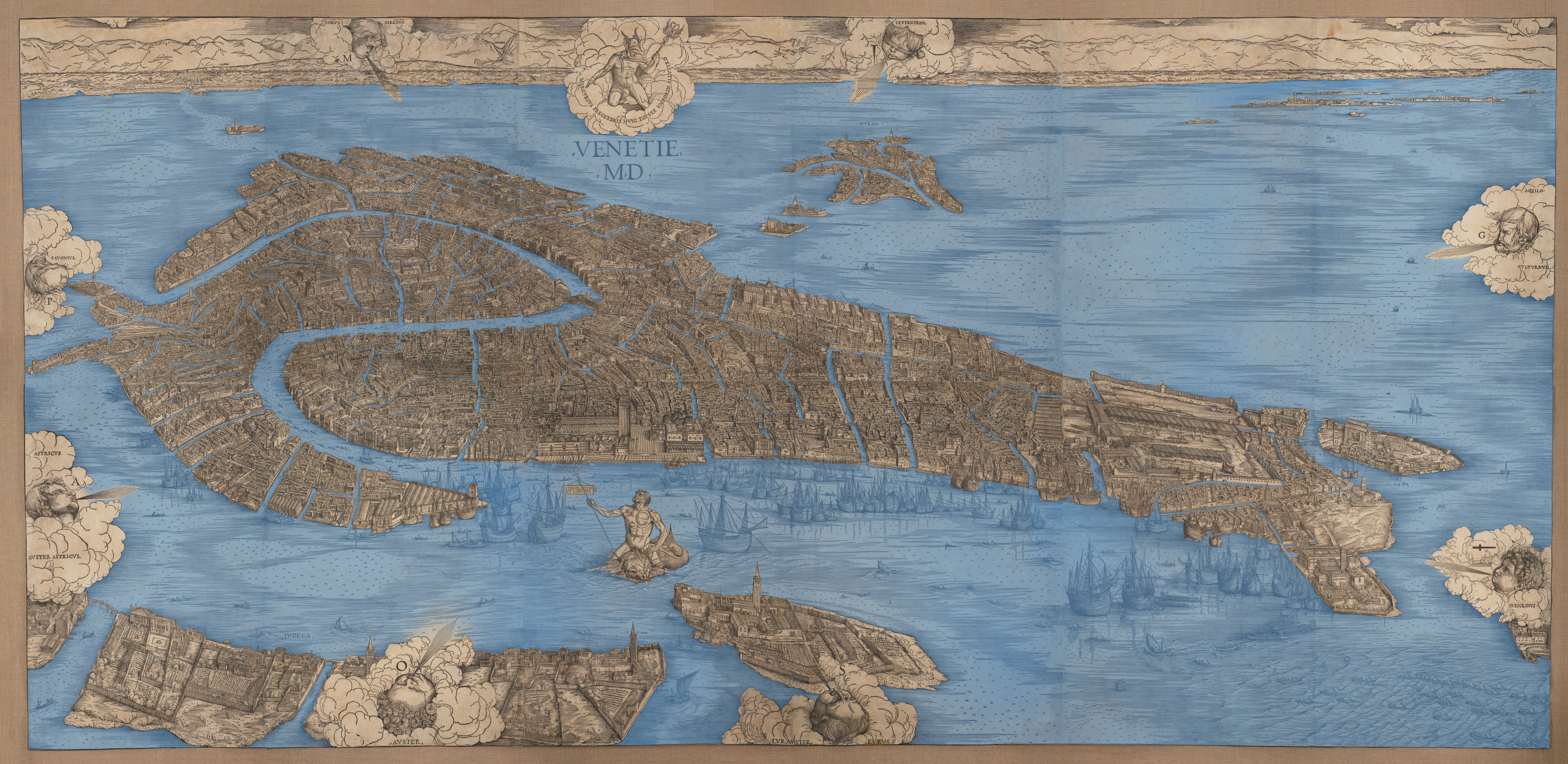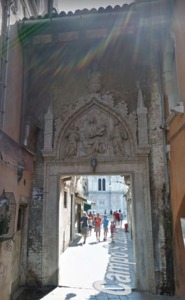San Zaccaria Before 1300
Early History of San Zaccaria
Click here to view an interactive map of San Zaccaria before 1300.
San Zaccaria’s history and lore is entwined with that of the city of Venice. Consecrated in the seventh century, the convent's prestige continued to be elevated as the nuns acquired the relics of Saint Zacharias, and as the myth regarding the donation of the ducal cornu by the first abbess spread. The convent’s early establishment guaranteed that a majority of its island was dominated by the monastic complex. In 1300, only a single bridge connected the island to its neighbors to the northeast (toward San Marco), meaning that the island was fairly remote from its neighbors. The campo was visibly open to the Bacino, the large body of water to the island's south, again further indicating the relative isolation of its inhabitants.

Reconstrcuted Gothic Plan of San Zaccaria, from Trevisan, "Le fasi antiche della chiesa di San Zaccaria," 69. The red outline indicates the proposed original boundary walls of the church.
The church itself had already undergone several renovations by 1300. The first, completed in 829, enlarged the original seventh-century foundations.[1] The ninth-century church again underwent construction in the tenth century, whose crypt still stands today. San Zaccaria received more renovations after a fire in 1105; this period of construction, dating to 1172-74, stood until the middle of the fifteenth century.
San Zaccaria served as the personal chapel for the doge before the Basilica of San Marco was built, revealing the prominence of the convent church.[2] The doge needed to be able to access San Zaccaria in a fairly convenient manner from his palace. The "Door of San Zaccaria" provided access to the convent for the doge and other privileged visitors from a small inlet to the monastery complex. Even though the church no longer served this special function for the doge after the Basilica of San Marco was completed, the doge still honored the convent by annually processing there and celebrating Easter Mass at San Zaccaria, continuing the relationship between the political and religious institutions.[3] The prestige of San Zaccaria, as well as the close connection between the convent and the doge, shaped the later construction of the convent as it responded to social pressures to maintain and modernize a church worthy of an elevated social position.
[1] A brief overview of the church’s building history can be found in Richard J. Goy, Building Renaissance Venice: Patrons, Architects and Builders c. 1430-1500 (New Haven: Yale University Press, 2006), 167–68.
[2] Gary M. Radke, “Nuns and Their Art: The Case of San Zaccaria in Renaissance Venice,” Renaissance Quarterly 34, no. 2 (2001): 445.
[3] Radke, 446.

